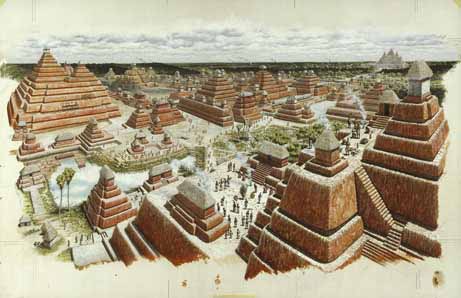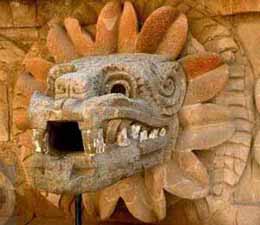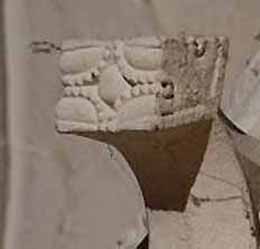In spite of the invasion of foreign tourism, Mayan culture has remained amazingly intact. Many of the Yucatan Mayans whose ancestors were hunters, chicle farmers and fisherman now work in hotels and other tourist related businesses. More than 350,000 Mayans living in the Yucatan speak Yukatek Mayans and most speak Spanish as a second language, primarily learned in school.
The clothing worn is as it was in the past. It is relatively easy to determine the village in which the clothing was made by the the type of embroidery, color, design and shape.
Mayans women can be seen wearing huipils, simple cotton dresses decorated with embroidery. The designs in their embroidery and weaving can be traced back to pre-Columbian times.
Although Mayans in other parts of Central America choose to limit contact with outside influences, Mayans working in the tourist industry are generally open to conversation with polite strangers and if asked will teach you a Mayan phrase or two.
In the Indian communities, as it was with their Mayan ancestors, the basic staple diet is corn.
Mayan dialects of Qhuche, Cakchiquel, Kekchi, and Mam are still spoken today, although the majority of Indians also speak Spanish.
Maya Civilization Wikipedia
The Maya were resourceful in harnessing energy, creating amazingly sophisticated works of art and engineering and sustaining a civilization for approximately 1,500 years. It has been shown that the Maya had attributes of the supernatural, and were masters of their environment. Their secret wisdom remains unknown, some people attributing it to extraterrestrials races, whose space ships are seen to this very day in Central and South America.

The cause of the Mayan collapse came over decades with no one quite sure what happened. There is no one single explanation for this implosion, but some scholars seem to believe that environmental catastropy lead to a full blown meltdown - lack of food and polluted water which produced malnutrition and disease.
As with all civilizations, we discover that their Gods - like those some people worship today our Gods - did not help - as they do not exist - only our own consciousness to guide us in the wastelands of realities.
Mayan archaeology is coming into it's Golden Age with the help of satellite imagery and photography. There are innumerable Mayan cities, temples, and settlements still to be discovered. We have learned that the Maya were an innovative, creative, and majestic people with their own particular taste for violence. The allure of the Maya is coming to the fore. Like the mystique of Egypt, people are drawn to the land of the Maya, each year. There is something they are guided to find, perhaps linked to major planetary grid points that awaken consciousness.
Could other attractions to the land of the Maya include:
- Mayan architecture with its serene palaces and temples
- the intricacies of hieroglyphs and art in a complex writing system
- the astounded comprehension of astronomy and mathematics with a concept of zero unparalleled in antiquity
- is it simply because these remarkable people carved magnificent cities, not just villages and towns, right out of some of the most inhospitable landscape in the entire world? In the rain forest between Honduras and the Yucatan, there are literally thousands of Maya sites that remain untouched. In Palanque alone there are approximately 1,550 buildings that lie unexcavated with endless archaeological treasures yet to be found.

Quetzalcoatl

No comments:
Post a Comment